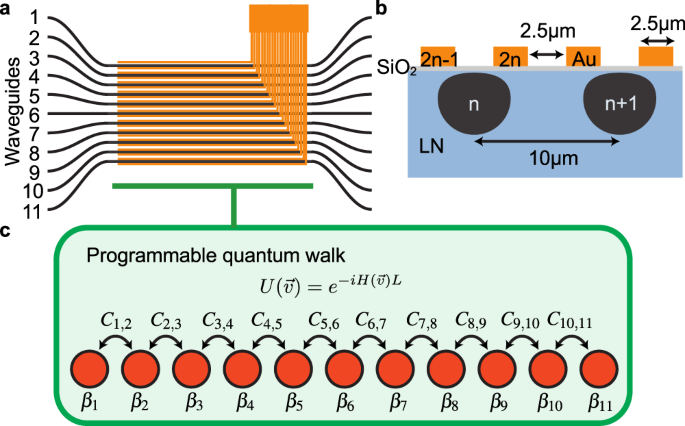2024-02-29 ロイヤルメルボルン工科大学(RMIT)
<関連情報>
- https://www.rmit.edu.au/news/all-news/2024/feb/photonics-device
- https://www.nature.com/articles/s41534-023-00795-5
- https://www.nature.com/articles/s41467-023-44185-z
実験的グレーボックス量子システム同定と制御 Experimental graybox quantum system identification and control
Akram Youssry,Yang Yang,Robert J. Chapman,Ben Haylock,Francesco Lenzini,Mirko Lobino & Alberto Peruzzo
npj Quantum Information Published:13 January 2024
DOI:https://doi.org/10.1038/s41534-023-00795-5

Abstract
Understanding and controlling engineered quantum systems is key to developing practical quantum technology. However, given the current technological limitations, such as fabrication imperfections and environmental noise, this is not always possible. To address these issues, a great deal of theoretical and numerical methods for quantum system identification and control have been developed. These methods range from traditional curve fittings, which are limited by the accuracy of the model that describes the system, to machine learning (ML) methods, which provide efficient control solutions but no control beyond the output of the model, nor insights into the underlying physical process. Here we experimentally demonstrate a ‘graybox’ approach to construct a physical model of a quantum system and use it to design optimal control. We report superior performance over model fitting, while generating unitaries and Hamiltonians, which are quantities not available from the structure of standard supervised ML models. Our approach combines physics principles with high-accuracy ML and is effective with any problem where the required controlled quantities cannot be directly measured in experiments. This method naturally extends to time-dependent and open quantum systems, with applications in quantum noise spectroscopy and cancellation.
光導波路アレイにおけるプログラム可能な高次元ハミルトニアン Programmable high-dimensional Hamiltonian in a photonic waveguide array
Yang Yang,Robert J. Chapman,Ben Haylock,Francesco Lenzini,Yogesh N. Joglekar,Mirko Lobino & Alberto Peruzzo
Nature Communications Published:02 January 2024
DOI:https://doi.org/10.1038/s41467-023-44185-z

Abstract
Waveguide lattices offer a compact and stable platform for a range of applications, including quantum walks, condensed matter system simulation, and classical and quantum information processing. However, to date, waveguide lattice devices have been static and designed for specific applications. We present a programmable waveguide array in which the Hamiltonian terms can be individually electro-optically tuned to implement various Hamiltonian continuous-time evolutions on a single device. We used a single array with 11 waveguides in lithium niobate, controlled via 22 electrodes, to perform a range of experiments that realized the Su-Schriffer-Heeger model, the Aubrey-Andre model, and Anderson localization, which is equivalent to over 2500 static devices. Our architecture’s micron-scale local electric fields overcome the cross-talk limitations of thermo-optic phase shifters in other platforms such as silicon, silicon-nitride, and silica. Electro-optic control allows for ultra-fast and more precise reconfigurability with lower power consumption, and with quantum input states, our platform can enable the study of multiple condensed matter quantum dynamics with a single device.



